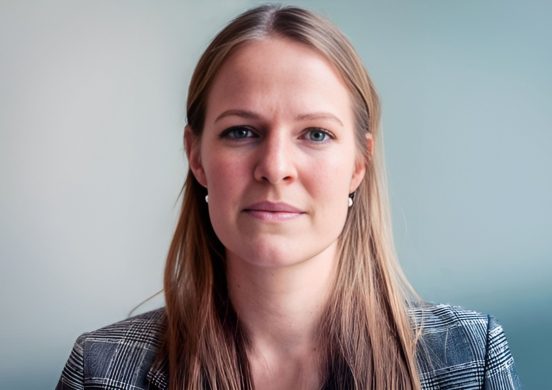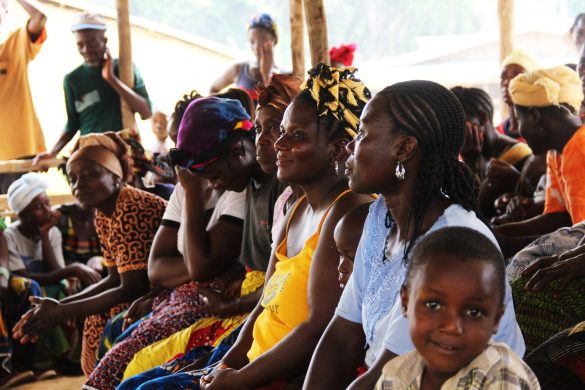De fattige udviklingslande er bekymrede for, at klimastøtte bliver taget fra udviklingsbistanden, men klimaveteranen Nicolas Stern advarer mod en ”rigid” adskillelse mellem støtte til udvikling og klimafinansiering, fordi udfordringerne hænger så meget sammen.
Det fremgår af et nyt policy-paper publiceret i slutningen af marts af Grantham Research Institute on Climate Change.
Den er udarbejdet af Lord Nicolas Stern, som i mange år har forsket i klima og været fortaler for en ambitiøs indsats mod klimaforandringer.
Rige og fattige lande skal i 2015 forsøge at finde en model for udviklingsbistand og klimafinansiering. Udviklingslande ønsker støtte til klimatiltag og klimatilpasning, men de er bekymrede for, at klimafinansiering tages fra den nuværende udviklingsbistand.
Der er tre vigtige møder i år angående udviklingsbistand og klimafinansiering.
I begyndelsen af juli mødes landene i Addis Ababa i Etiopien til en international konference om udviklingsbistand.
I september skal de nye bæredygtige udviklingsmål vedtages i FN. Og i december skal verdens nationer blive enige om en ny international klimaaftale i Paris.
Udvikling og klima hænger sammen
Pressemeddelelsen fra Grantham Research Institutte:
Governments should not create a rigid separation between their overseas aid for supporting development and their financial support to help developing countries tackle climate change.
This is the warning in a new policy paper published by Nicolas Stern, the Grantham Research Institute on Climate Change and the Environment and the ESRC Centre for Climate Change Economics and Policy at London School of Economics and Political Science.
Lord Stern’s paper was produced to inform negotiations ahead of a key international conference on finance for development, due to take place in Addis Ababa, Ethiopia, in July 2015, and the United Nations climate change summit, which will be held in Paris in December 2015.
The paper states: “The challenges of development, growth, poverty reduction and sustainability are deeply and intricately interwoven with those of mitigation of and adaptation to climate change. It would be deeply damaging to try to treat them as separate entities for action and for finance.”
It adds:
“The different organisational tracks for the conference in Addis Ababa and the summit in Paris should be seen as an opportunity to complement and reinforce, not as a recipe for separation.
“Indeed, radical separation of finance for development and climate finance could be deeply damaging. It is a serious mistake to see action on climate and action on development as in conflict, or action on the former as a ‘plot’ to slow the latter.”
100 milliarder årlige dollars til fattige lande
Negotiations about climate finance ahead of the Paris summit have focused on the achievement of a commitment by rich countries, made in 2010, to provide US$100 billion per year from public and private sources by 2020 to developing countries to help them make the transition to low-carbon economic growth and to make themselves more resilient to those impacts of climate change that cannot now be avoided.
Lord Stern’s paper states:
“In thinking about the scale and nature of climate finance for the Paris summit, it should be clearly recognised that overall infrastructure finance for emerging markets and developing countries could be of the order of US$3 trillion per annum in the next decade or so. It is important to see climate finance for the Paris summit, at US$100 billion per annum, as catalytic in this context, rather than ‘gap-filling’.”
“Additionelle midler”
The paper examines the critical issue of the ‘additionality’ of climate finance with respect to official development assistance (ODA), and identifies four ways of defining it:
– supporting programmes or projects that would not have come about without climate finance;
– stimulating action in areas which would not be otherwise covered or financed adequately by other sources;
– mobilising new sources of financing that would not otherwise be forthcoming or available; and
– providing a scale of overall ODA resources for climate action which is additional to what has been previously committed to development.
6 områder for klimastøtte
The paper proposes six priority areas for support by climate finance:
– promoting low- or lower-carbon activity in relation to infrastructure that may be under-emphasised in the agreement in Addis Ababa;
– enhancing low-carbon activities, including energy efficiency, in non-infrastructure activities for buildings, transport, industry, agriculture, etc.;
– funding adaptation, particularly for the most vulnerable and poorest countries;
– avoiding deforestation, more productive land use, and protection of fragile resources, including oceans and biodiversity;
– investing in innovation and breaking new ground for climate action, including novel ways for the public and private sectors to work together (eg on carbon capture and storage or climate-resilient agriculture); and
– creating regional action, as many climate actions for both adaptation and mitigation are regional in nature but at the moment are under-supported and under-funded.
Læs mere og download rapporten her: http://www.lse.ac.uk/GranthamInstitute/news/nicholas-stern-warns-governments-against-rigid-separation-between-overseas-aid-for-development-and-finance-for-action-on-climate-change/















